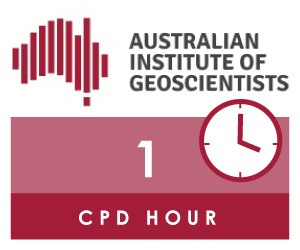| |
 Speaker: Koichi Hayashi. Talk presented by ASEG Queensland Branch
Speaker: Koichi Hayashi. Talk presented by ASEG Queensland Branch
About the Speaker:
Koichi Hayashi is presently a Software Development Manager at Geometrics in San Jose, California. He has worked, over the past 20 years, as a research geophysicist focusing on providing better tools and algorithms for near-surface geophysical methods. He earned a bachelor’s degree in Earth Sciences from Chiba University, a master’s in Earth Sciences from the Massachusetts Institute of Technology, and a PhD in Earth Resources Engineering from Kyoto University. His main research areas are seismic refraction, active and passive surface waves, finite-difference seismic modelling, and travel time inversion. He is the main developer of the widely used SeisImager program and has incorporated many of his theoretical developments into the software, making SeisImager a premier surface-wave, refraction, and downhole processing package available today. He regularly presents papers at SEG meetings and has published over 30 papers in journals and proceedings of SEG, EEGS, and SEGJ. In 2006, he received an award from SEGJ for the development of surface wave methods. He presented in an SEGJ one-day seminar on the surface-wave method. He is a member of SEG’s Near-Surface Task Force and of the International Affairs Committee of SEGJ.
Talk Overview:
The “Near-Surface” is a region of day-to-day human activity on the Earth. It is exposed to the natural phenomena which sometimes cause disasters. This lecture covers a broad spectrum of the geotechnical and geohazard ways of mitigating disaster and conserving the natural environment using geophysical methods and emphasizes the contribution of geophysics to such issues.
The lecture focuses on the usefulness of geophysical surveys in providing information to mitigate disasters, rather than the theoretical details of a particular technique. Several techniques are introduced at the level of concept and application. Topics include various geohazard and geoenvironmental applications, such as for earthquake disaster mitigation, preventing floods triggered by tremendous rain, for environmental conservation and studying the effect of global warming. Many geophysical techniques discussed with the applications of active and passive surface-waves, refraction, and resistivity methods will be highlighted. Several related issues, such as performance-based design, standardization or regularization, internet access, and databases are also discussed.
The lecture discusses the application of geophysical methods to engineering investigations from a “non-uniqueness” point of view and introduces the concepts of “integrated” and “quantitative.” Most geophysical analyses are essentially non-unique and it is very difficult to obtain unique and reliable engineering solutions from only one geophysical method. The only practical way to improve the reliability of investigation is the joint use of several geophysical and geotechnical investigation methods, an “integrated” approach to geophysics. The result of a geophysical method is generally vague–here is a high-velocity layer, it may be bed rock; this low resistivity section may contain clayey soils. Such vague, qualitative and subjective inte